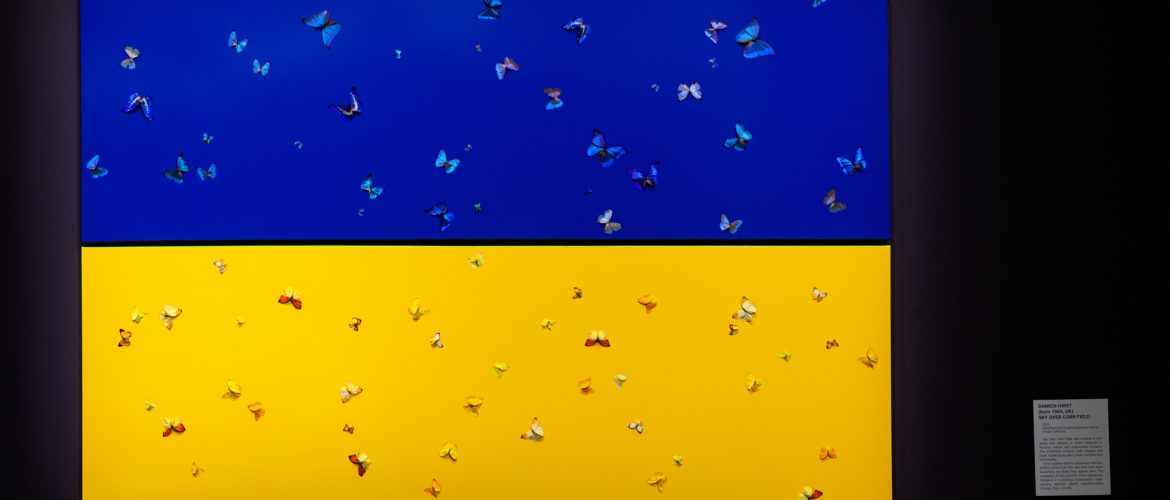The World of Damien Hirst: Themes, Inspirations, and Motifs

Damien Hirst is probably one of the most controversial contemporary artists in the world. While some people call his work shallow and commercial, others see it as an acute critique of the consumerist society. Hirst has even been accused of plagiarism and sued multiple times by other artists. Nevertheless, his artwork never lost its appeal and relevance and continues to be sought after by influential art collectors. Along with Yayoi Kusama and Jeff Koons, Hirts became the face of the modern Pop Art movement due to his signature style and recurring themes. Let’s dive into the exploration of some of them.
The World of Damien Hirst: Themes, Inspirations, and Motifs
Spots
Damien Hirst is most well-known for his Spot Painting series. By placing colorful dots on a blank background in organized rows, the conceptual artist aimed to create pieces that would draw the audience’s attention to color, without distracting them with complex forms or composition. He later released a series of spot paintings where dots were seemingly miscellaneously placed on a canvas and appeared to be smudged.
Butterflies
A symbol of beauty, the divine, and life itself, butterflies are considered an object of veneration and admiration in many cultures. Hirst is not a stranger to these beliefs: his 1991 piece featured real butterfly pupae that then would hatch, filling the room with insects. The artist has since moved on to less controversial ways of paying homage to nature’s angels. Sky Over Corn Field, one of his latest works (featured), included butterflies scattered around the surface of the Ukrainian blue-and-yellow flag.
Sculls
Damien Hirst once said that every single piece of art that has ever interested him was about death in one way or another. The artist’s fascination with the morbid but natural part of the human life cycle has transferred into his art. In 2008, he made a cast of an 18th-century human skull encrusted with diamonds, which cost him around $15 million. Not unlike the butterfly, a skull is a reminder of the mortality of all living things.
Whatever your opinion of Damien Hirst might be, one cannot deny that he is a master of extravagance. From his taxidermy animals presented in glass containers and rotting cow heads to obscenely expensive diamond-encrusted sculptures, his work is often shocking and provocative in unexpected ways. Whether that is a good or a bad thing is a question of personal taste.
